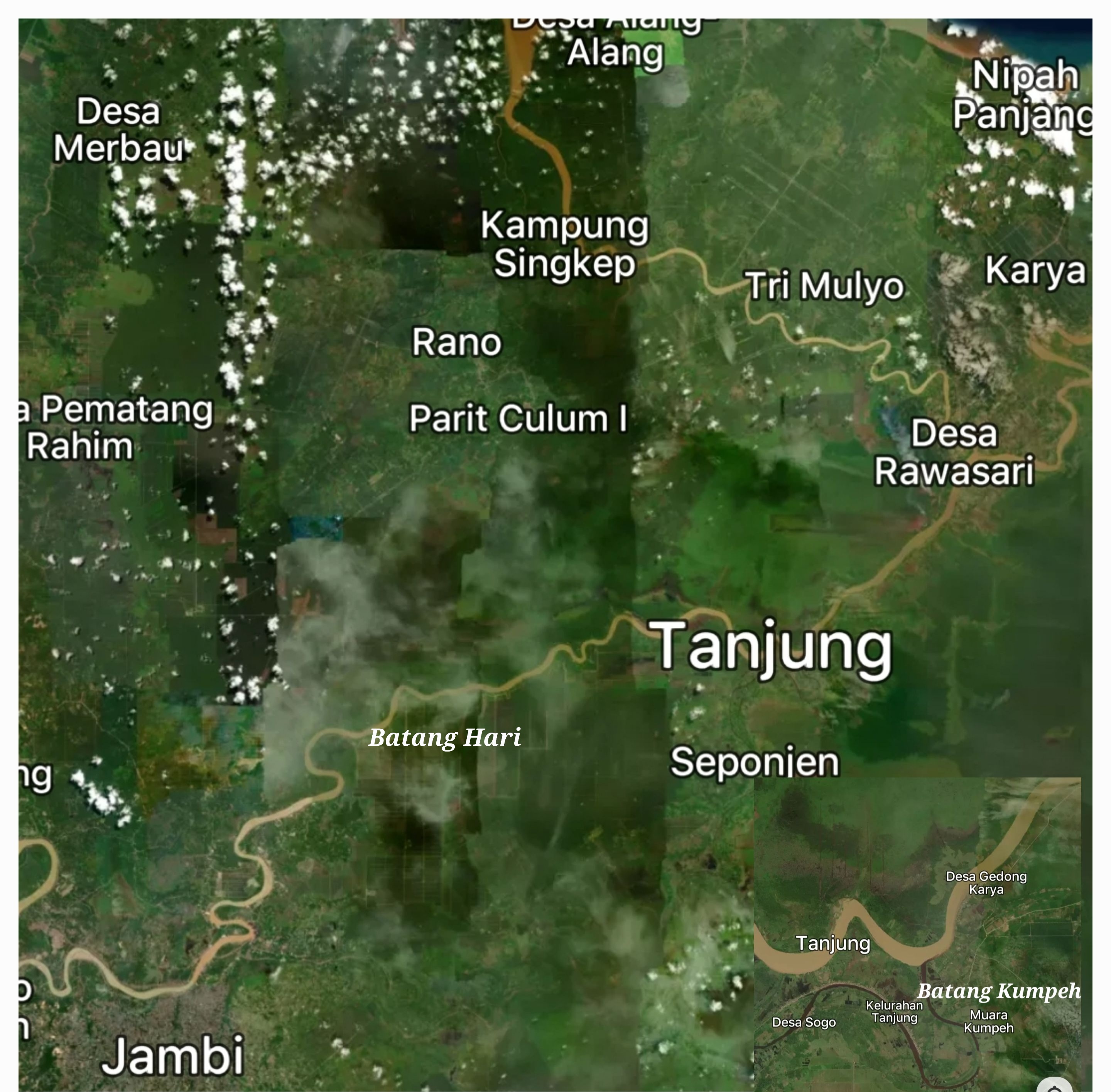A General Survey of Ancient Trade Ceramics Recovered from Batang
Kumpeh, Jambi
Since 2022, Jambi has emerged as a rich and exciting hunting ground for
antique dealers and collectors seeking ancient Chinese trade ceramics.
Of particular interest is the significant quantity of high-quality
Southern Song Longquan wares that have flooded the antique market. These
ceramics were subsequently traced to Batang Kumpeh in Muara Kumpeh.
According to friends who have visited the site, between 100 and 200
boats actively ply Batang Kumpeh, with divers searching for underwater
treasures near its confluence with the main river, Batang Hari. One can
easily imagine the daily hive of activity, filled with anticipation and
occasional disappointment, as ceramics are retrieved from the riverbed.
Beyond Longquan wares, substantial quantities of 12th–13th century
Guangdong and Fujian ceramics have been recovered. There are also
notable examples of Jiangxi Jingdezhen qingbai wares and, on rare
occasions, Yaozhou and Jizhou ceramics. The majority of these trade
ceramics date to the 12th–13th centuries, though smaller quantities of
earlier and later pieces have also surfaced.
According to information from a local source, some divers reported
finding Yue wares buried deeper in the riverbed, making retrieval
hazardous. A friend of mine acquired a beautiful Northern Song Yue ewer
with a carved parrot decoration from this location, further confirming
the diversity of ceramics in the area.
The Importance of Batang Kumpeh as a Ceramics Repository
Through Facebook, numerous ancient Chinese ceramics originating from
Batang Kumpeh have been offered for sale by Indonesian dealers. This
river appears to be a remarkable depository of Chinese ceramics spanning
over a thousand years. Interestingly, Southeast Asian Thai and
Vietnamese ceramics from the late 14th–16th centuries—representing a
later phase of trade ceramics during the Ming Dynasty's maritime trade
ban—have also been discovered here.
For researchers and collectors, this presents an invaluable opportunity
to document and study a significant collection of reference materials
that could enhance our understanding of ancient ceramic trade networks
in Jambi and, more broadly, across Southeast Asia. While the recovery of
these ceramics is not conducted through scientific excavation—leading to
the loss of crucial contextual information—we can still construct a
reasonably accurate chronological and trade pattern analysis. By
comparing these finds with data from Southeast Asian shipwreck cargoes
and Chinese kiln excavation reports, we can piece together the nature of
this trade.
It is essential to gather and document this information before these
artifacts become scattered across the world through online sales,
potentially losing valuable historical context with time.
A Range of 12th–13th Century Chinese Ceramics from Batang Kumpeh
During a Google search, I came across an article by Dr. Edwards McKinnon
detailing an archaeological surface survey conducted at Muara Kumpeh
Hilir in the early 1980s. He referenced historian Schlegel, who
suggested that “Muara Kumpeh was a principal port of the country (of
Jambi), occupying a strategic location on the approach to Jambi,” which
was about 72 km upstream from Batang Hari.
Ceramic sherds collected from the riverbank by Dr. McKinnon dated to the
12th–14th centuries. Suak Kandis, on the opposite bank of the river,
revealed similar findings.
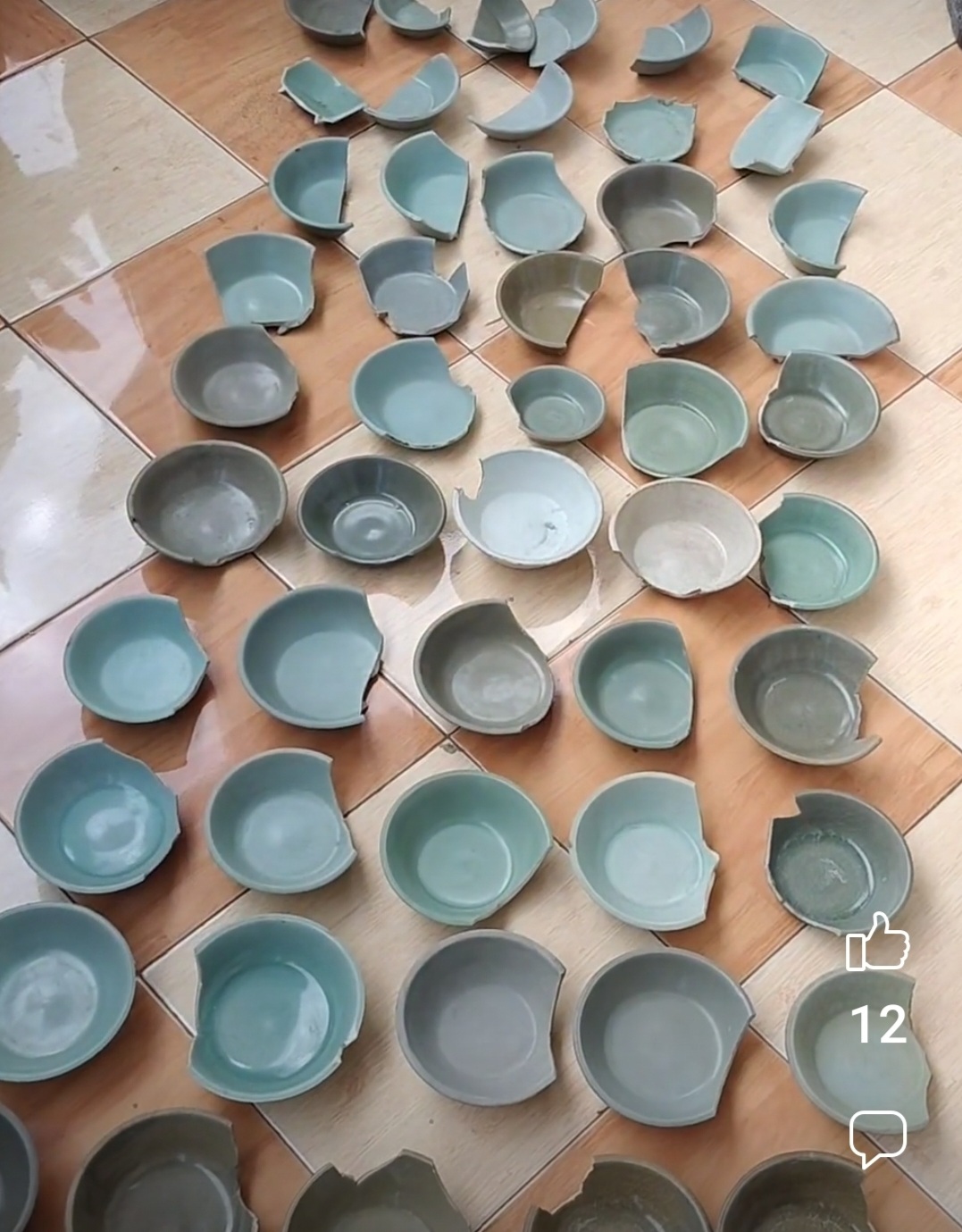 |
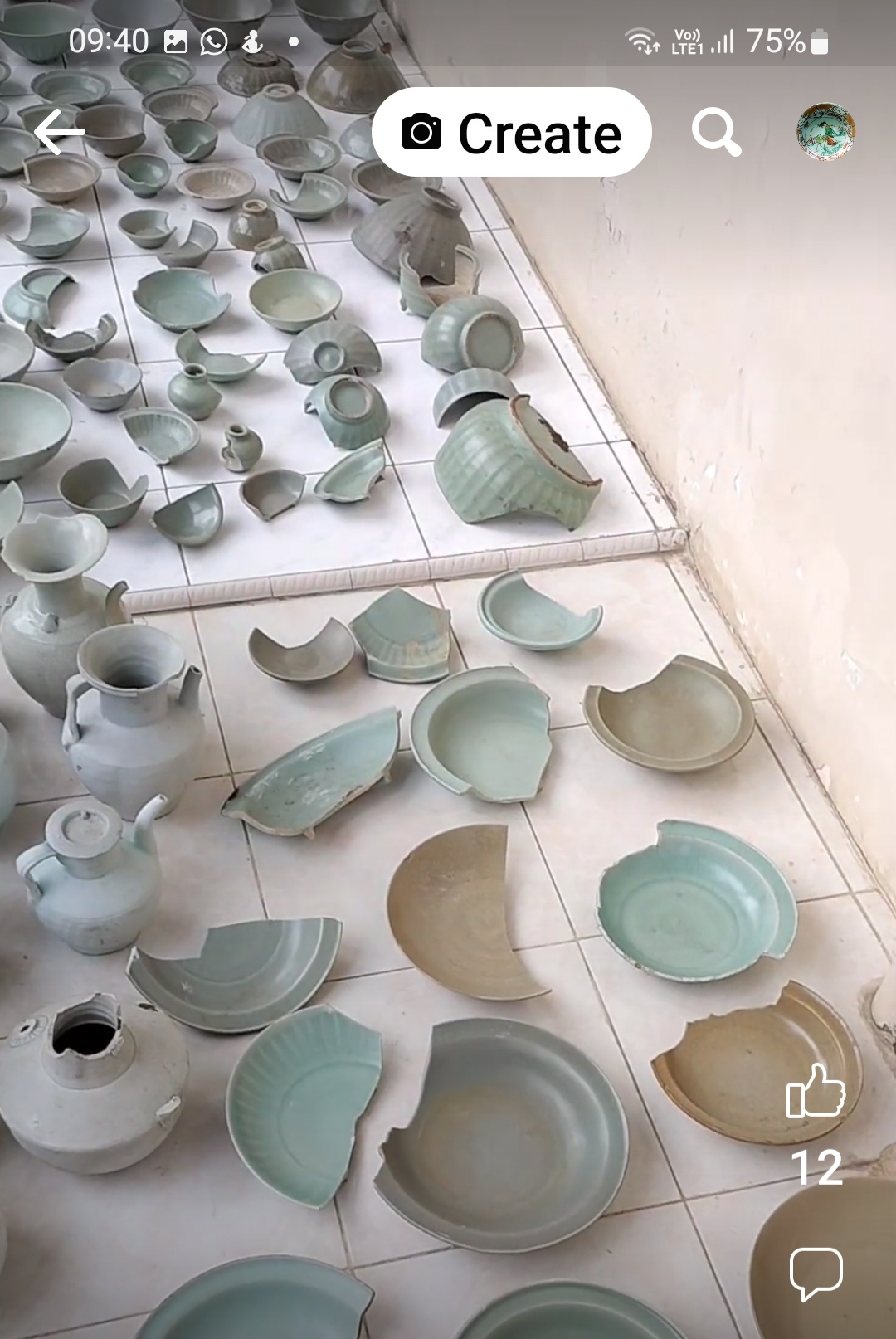 |
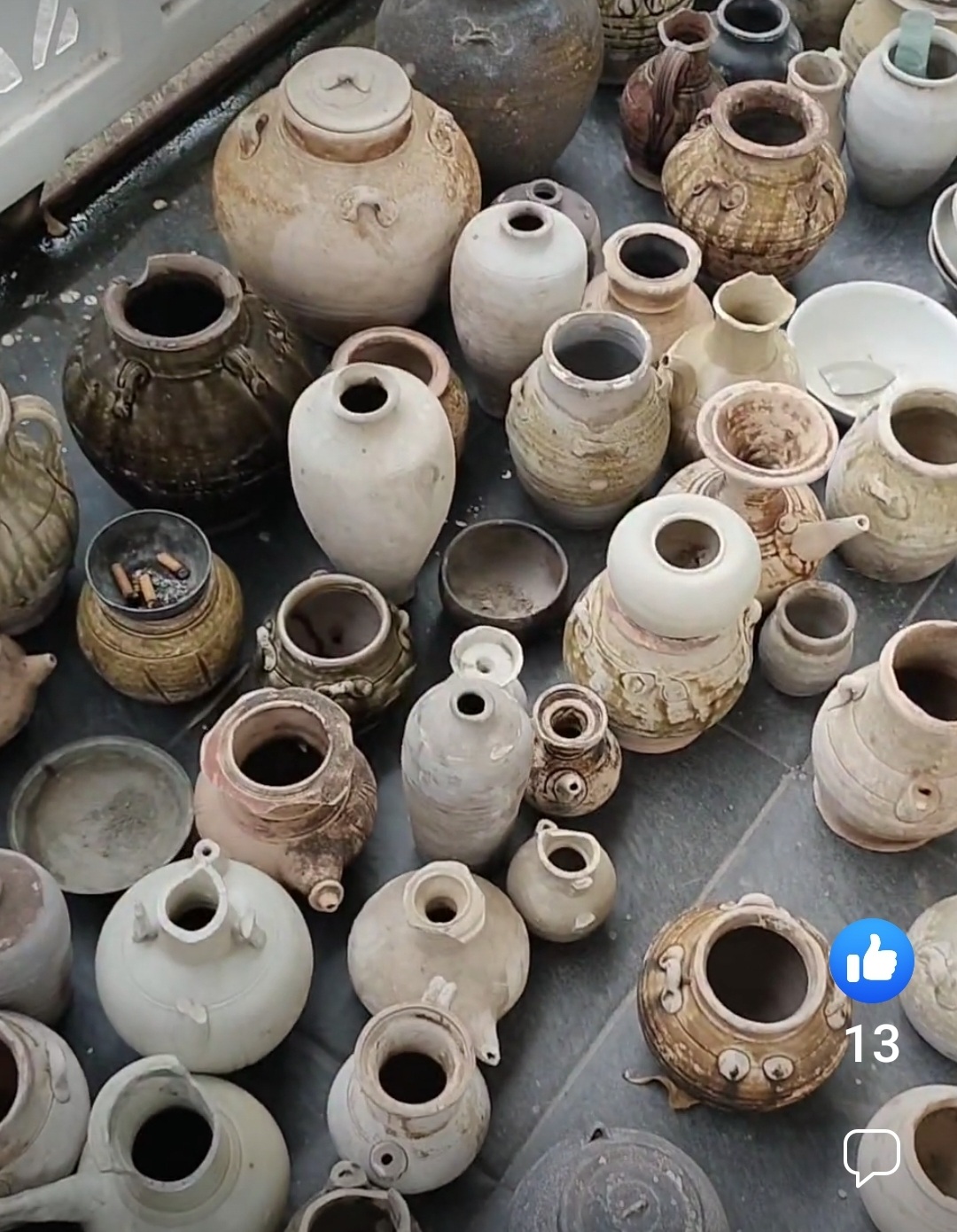 |
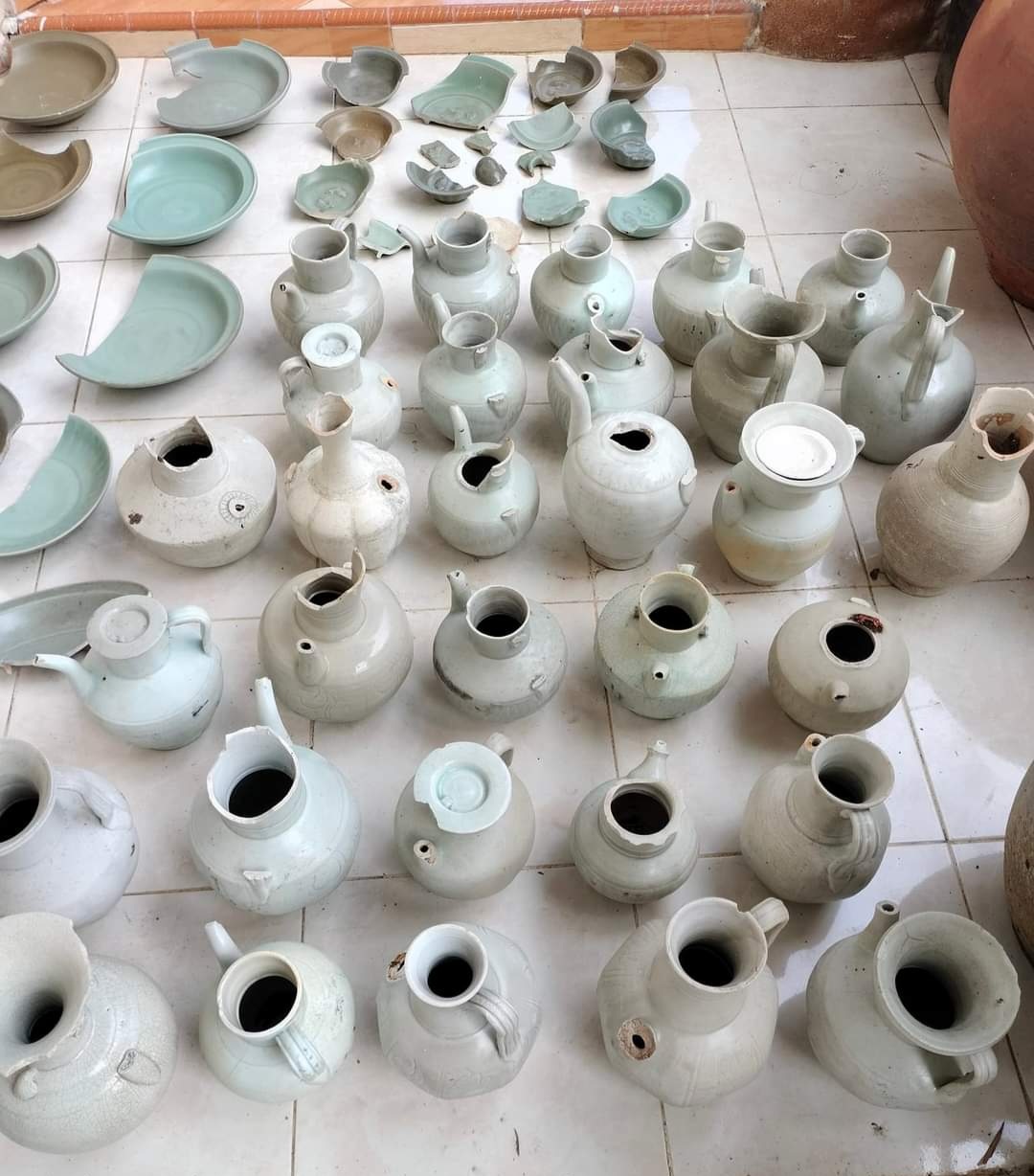 |
| Varied range of 12/13th
Cent. Chinese Ceramics recovered from Batang Kumpeh |
Historical Background of the Melayu Kingdom
The significant volume of ceramics recovered from Batang Kumpeh
indirectly supports fragmentary historical records indicating a shift in
political and commercial power from Palembang to Jambi following
Srivijaya’s defeat by the Chola in 1025 CE. Between 1079 and 1088,
Chinese records document ambassadors being sent from both Jambi and
Palembang, suggesting that the center of Srivijaya’s power frequently
alternated between these two cities during that period.
The Melayu (or Mauli) Kingdom was officially established in 1183 CE and
lasted until its conquest by Majapahit in the 14th century. Notably, a
significant proportion of the ceramics found in Batang Kumpeh date to
the 13th century, with a high quantity of fine Longquan celadon wares.
This suggests a period of economic prosperity for the region, possibly
driven by active trade. From a geopolitical perspective, the Melayu
Kingdom appears to have been at its peak during the 13th century, with
trade playing a crucial role in its wealth and influence.
Evidence from Muaro Jambi Temple Complex
Unlike Palembang, where physical traces of Srivijaya’s once-powerful
empire are scarce, the Muaro Jambi temple complex stands as a testament
to its past glory. Located 26 km east of Jambi city, this Buddhist
temple complex was built by the Melayu Kingdom and is one of the largest
and best-preserved ancient temple sites in Southeast Asia. It spans
approximately 12 square kilometers, with eight excavated temple
sanctuaries, while 80 more temple mounds remain unrestored. The site’s
origins are estimated to date from the 7th to 13th centuries CE.
A friend who recently visited Muaro Jambi was able to find fragments of
ancient Chinese ceramics at the temple complex.
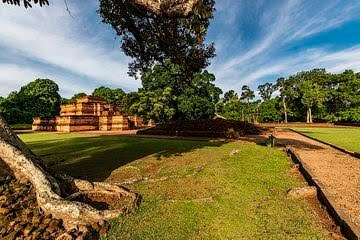 |
|
|
| Muaro Jambi Temple Complex |
|
|
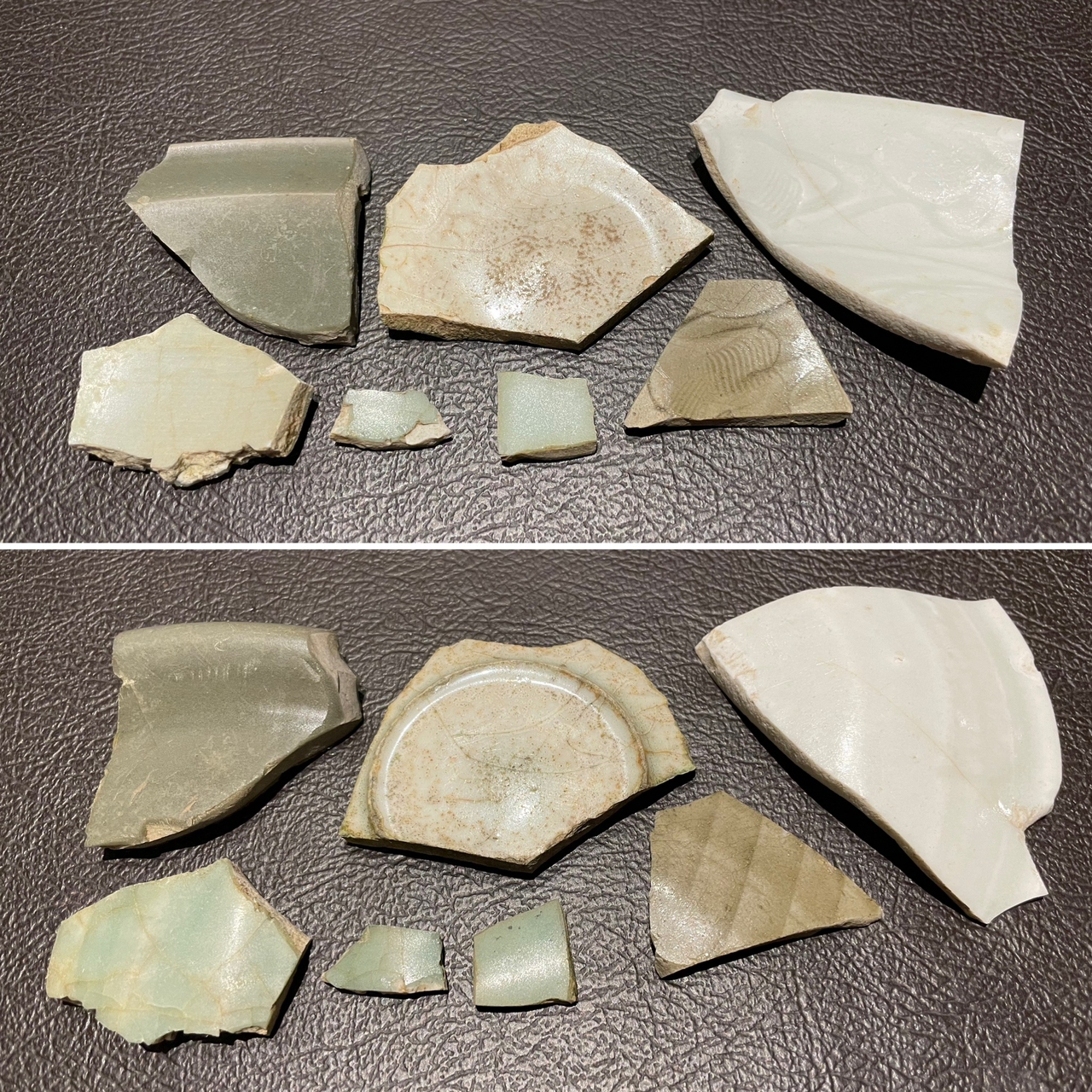 |
| |
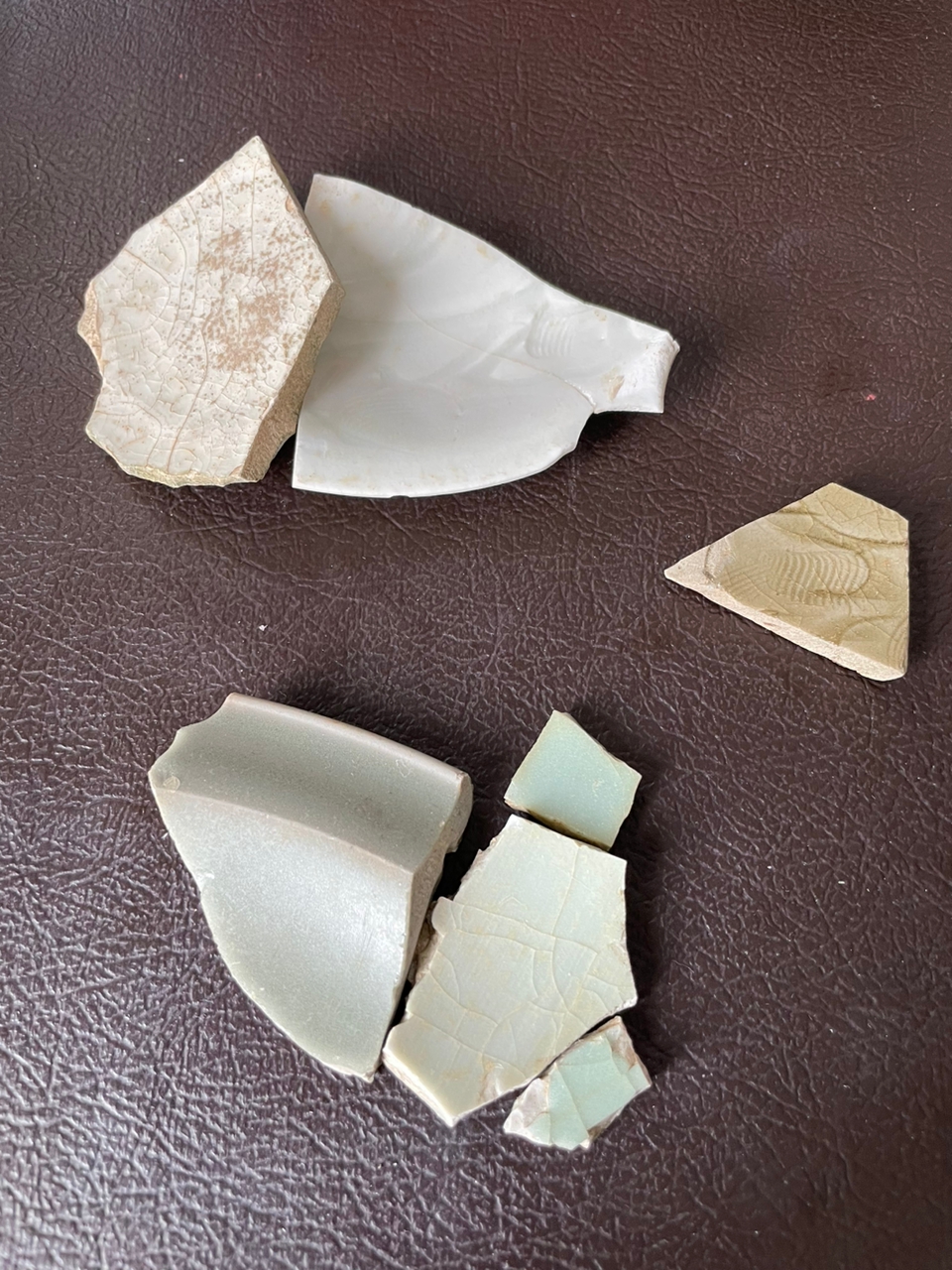 |
| Good quality Green and
Qingbai fragments found at the Temple complex |
Analysis of Ancient Chinese Ceramics Recovered from Batang Kumpeh
The ancient Chinese ceramics recovered from Batang Kumpeh can be broadly
categorized into four main groups spanning roughly two centuries
(12th–13th century). Smaller quantities of ceramics from earlier and
later periods were also found, though in much lower proportions. This
reflects Jambi’s fluctuating geopolitical significance—first under
Srivijaya’s dominance and later as part of the Majapahit Empire.
For a more detailed discussion on the ceramics found within each
category, please refer to the links below:
Closing Remarks
Based on currently available information, it appears that Indonesian
divers have recovered most of the Longquan pieces from the existing
location. The search has now shifted to other areas within Batang
Kumpeh, where findings are predominantly from Fujian and Guangdong
kilns.
Written by: NK Koh (April 1, 2023),
updated: 1 Mar 2025
